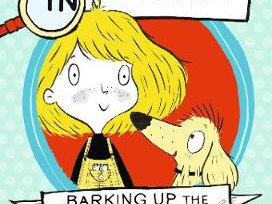Reading & Libraries
Published 27th September 2021

Some
time ago, I watched the Channel 5 series ‘Our Yorkshire Farm’ and whilst it was
entertaining and informative it was a staged documentary; the book offers a
more impassioned, graphic perception of the true realities of hill farming at
its finest and desperate times. It is an unadulterated plethora of anecdotes
depicting the merciless, demanding -and yet intensely rewarding existence of a
family dedicated to the welfare of their livestock and each other; the family
presents as a generous, consolidated and micro-managed troupe with even the
youngest upholding their role effectively. Owen paints a masterful series of
portraits of her beloved Dales but ‘neath the exquisite beauty of this idyllic
environment there lies the savagery of extreme winters and the haunting,
unpredictable dangers that lay within its tendrils.
The way in which Owen spins her tale of the rugged rural countryside with an almost manic but evocative narration of daily life -from giving birth twixt hay making, catering for visitors, managing livestock and parenting nine children is a beautiful ode to her family’s passion for hill farming. Her boundless energy and enthusiasm leaps from every page, invigorating the reader’s zeal for all things wild. The dialect adds a charm of its own, presenting the Owen family as old and treasured friends.
Accounts of the manic lambing season reflects the beauty of new life and creation generally; the infinite care proffered upon ewes and offspring is heart-warming and educational. The traumas of sick ewes, orphaned lambs -who are often afforded the role of family pets, and the constant surveillance, is recounted with depth, feeling and passion. The farm is not merely a means to a livelihood but an intrinsic part of this passionate family -a team of pragmatic individuals, each with their own eccentricities and inexhaustible dedication and affection for this extraordinary way of life.
Her insight into Yorkshire’s heritage and historical socio-economic evolution of farming and the decline of lead mines, provides a fascinating backdrop with its stark realisation of severe poverty which resulted in many enduring a ‘hand-to-mouth existence’ as they worked the land; she highlights the then vital need for shepherds and gamekeepers -initially called ‘watchers’, in the constant battle against the elements and poachers. Her reference to past -Cherry Kearton’s great grandson, and current naturalists -David Attenborough, creates further interest for the reader, embellishing this already substantial and credible account of a way of life that is silently and seamlessly entwined with nature.
Cherry Kearton and his brother Richard -raised in North Yorkshire, were late 19th century British naturalists who were leaders in the field of wildlife photography; 1898 saw the publication of their natural history book which was the first to be illustrated with wild photographs. They were nominees in ‘the Great North Yorkshire Sons and Daughters Campaign’ as reported by ‘The Northern Echo’ in April 2020.
As an amateur wildlife photographer and naturalist, I found this a refreshing, encouraging and heartening read which will delight those with a similar passion for our bounteous countryside which sings its own symphonic song -if only we find the time to listen.
Written by T.K.




